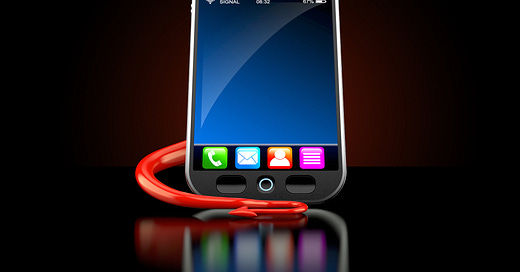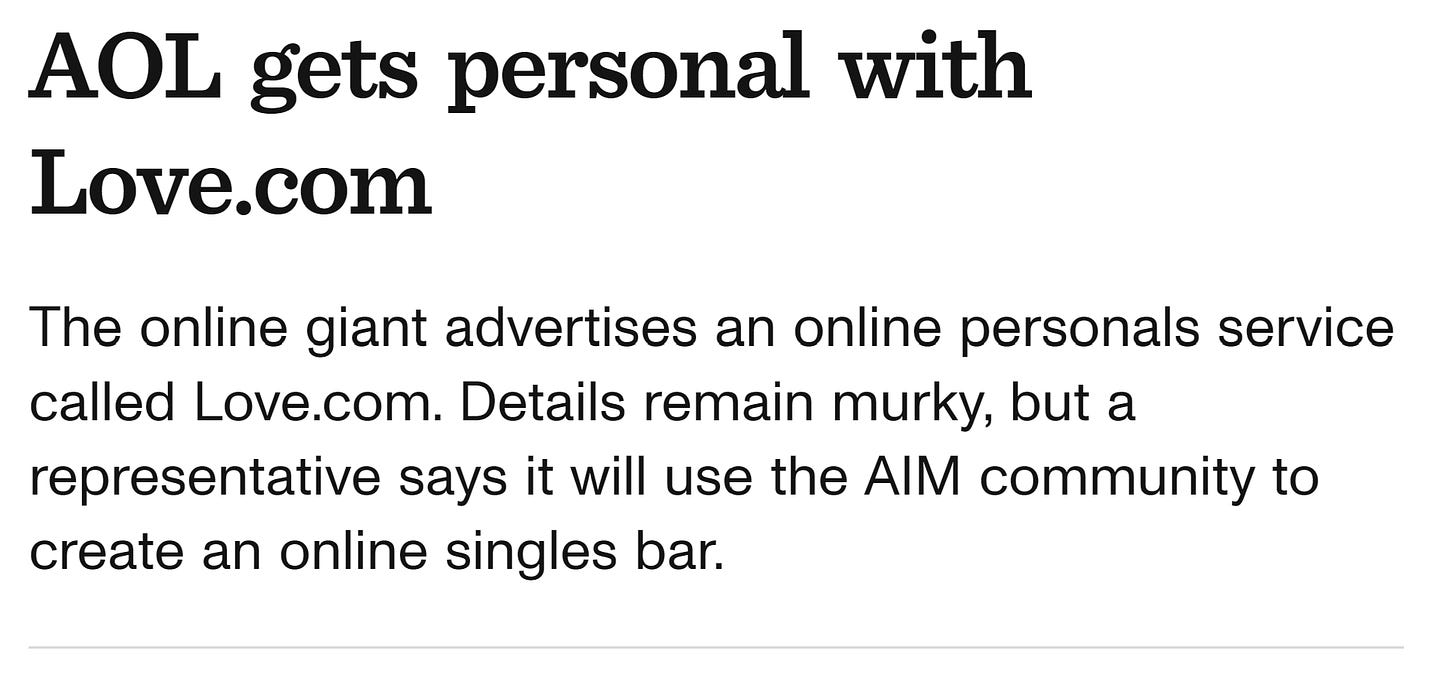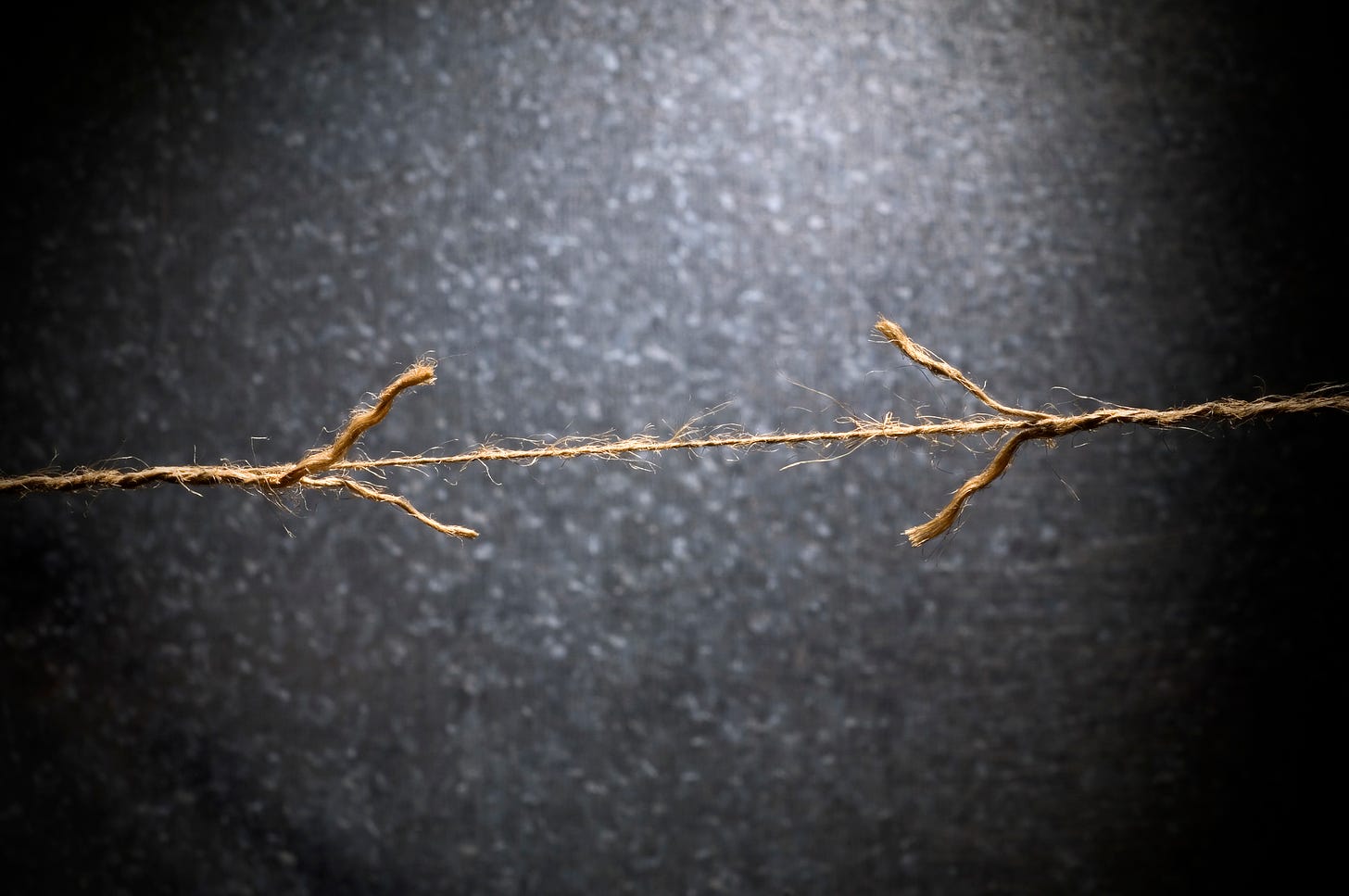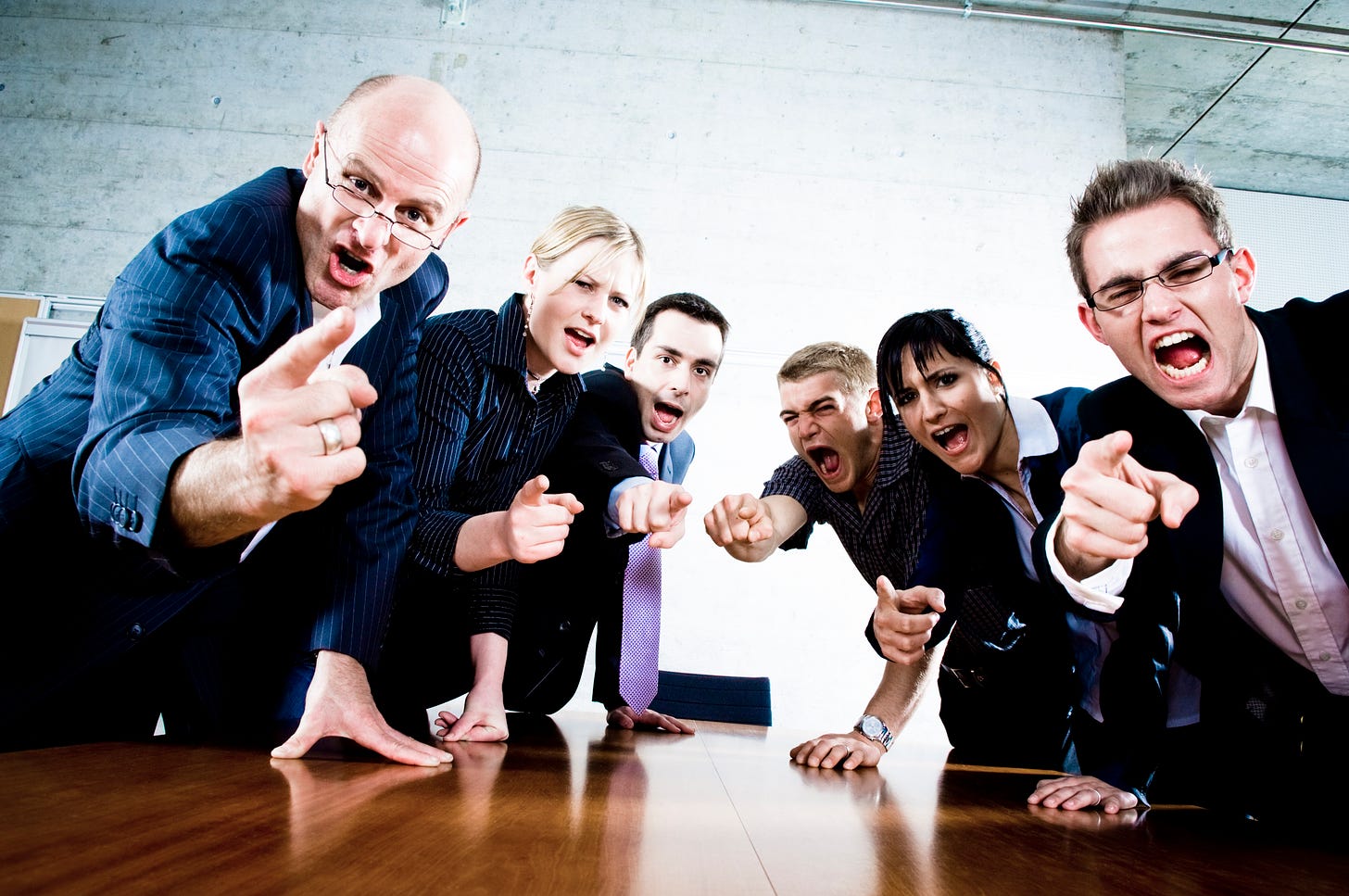Are smartphones to blame for the mental health crisis among teens? The debate has picked up steam lately, in part because of the steady accumulation of evidence that they are indeed, at least partially. (As you know, I’m a believer.) Jonathan Haidt has done considerable work marshaling this evidence. But there’s an attendant question of how phones make kids miserable, if indeed they do. In this post I offer some plausible answers. This is mostly just speculation and I don’t know if the proffered explanations can be tested empirically.
I want to start by establishing a sort of meta-layer on which a lot of these problems rest. We might be inclined to say that these problems are inherently problems of the internet/online life/digital culture, rather than smartphones as such; you can be hurt by what I’m going to describe from a laptop as well as from a smartphone. And I think that’s right, except for one key difference: ubiquity. No matter how portable and light it is, you’re not reflexively checking your laptop on the subway platform or in the bathroom. The iPhone took all of the various pathologies of the internet, made it possible for them to be experienced repetitively and at zero cost morning and night, and dramatically scaled up the financial incentives for companies to exploit those pathologies for gain. You can certainly have an unhealthy relationship with the internet when it’s confined to your desktop. But phones make relentless conditioning and reflexive engagement a mass phenomenon.
The other overriding factor here is the fact that adolescents are still developing mentally, and thus are likely more susceptible to these problems.
Constant exposure to unachievable conditions. Back in my youth, you might watch an MTV show about how rich people lived, or leaf through a magazine like US Weekly, and be exposed to opulence and material excess. Or you might go on vacation and see how the other half lives if you took a tour of the Hollywood hills or whatever. You were perfectly well aware that rich people and their privileged lives existed. But then you turned off the show or you put down the magazine or your vacation ended, and unless you were born rich, you lived in an environment that of necessity was modest and real. Your friends might have lived in nice houses, but you didn’t see riches everywhere you looked, and your definition of what a hot girl looked like was mostly derived from the girls you went to school with. Your environment conditioned the scope of your desires.
Now, exposure to lifestyles that are completely unachievable is constant. Instagram is a machine for making you feel like whatever you’ve got isn’t enough. (That’s how it functions financially, through advertising idealized lives.) There are young people out there who have arranged their various feeds such that they’re always a few seconds away from seeing concerts they can’t attend, cars they can’t drive, houses they can’t live in, clothes they can’t wear, women they can’t fuck or whose bodies they can’t have, places they can’t travel to, food they can’t eat, and lives they can’t live. When I was young, if I wanted to see a picture of a Ferrari, I had to seek out a picture of a Ferrari. It was hard to see suggestive photos of intimidatingly hot women, which is why the Sports Illustrated swimsuit edition was a big deal. Mostly, the world around you was quotidian and its pleasures attainable. What can it be doing to these generations of young people, having completely unrealistic visions of what life is like being shoved into their brains all the time? How could their actual lives ever compare?
(Incidentally, I am thoroughly convinced that a majority of self-described incels are men who could find meaningful and fulfilling sexual and romantic success, both short-term and long, but who have developed such a wildly unrealistic idea about what actual human women look like that their standards are laughably high. And it’s easy to make fun of that, but I also think that the conditioning inherent to constantly looking at filtered and photoshopped pictures is powerful.)
Relationship overload. Consider how dramatically our collective social circles have changed in perhaps a hundred years. If you lived in a small town in 1923, your personal relationships may have numbered in the low dozens. Telephones were rare; even by 1960, only 6 in 10 American homes had a phone. Even if you had a car (and you almost certainly didn’t), your geographical boundaries were small. (Even today, the average driver commutes only 41 miles a day, and increasing work-from-home will likely decrease that number.) You simply weren’t interacting with that many people. And while your city-dwelling counterparts likely had significantly more relationships to juggle, even then there was simply a certain carrying capacity that limited the number of personal connections you had; there are only so many hours in a day and so many places to go.
The rise of near-universal telephone access may have increased the average number of personal connections we had to manage, but not by much. How often do you meet someone new on the phone? But the internet was different. Online connectivity was in fact sold on the promise of opening us up to new worlds of people to meet and enjoy. And if you’re an active user of Twitter or Tumblr etc, you will form new relationships. There will be new people who you interact with, and as always you will have to develop a sense of who they are and a sense of who they think you are. Now replicate that, for power users, potentially thousands of times. For some, I’m sure this sounds romantic. To me, it sounds like a nightmare. Managing human relationships is hard work. It’s the stuff of life, don’t get me wrong - there is really little else to the human project than how we treat each other and feel about each other. But for that exact reason, the endless multiplication of relationships we have to manage is enervating. Even if most of our online connections are flimsy, the sheer cognitive load of simply knowing who all these people are must be immense. Our social-emotional systems are some of our most important and, it seems to me, our most delicate. I suspect that we’ve overtaxed those systems with the sheer number of people we now know.
Shallow relationships. As a corollary to the above, if we’re dividing the hours of the day and our mindshare between more and more relationships relative to the past, we’re almost certainly investing less in each individual relationship. Sure, the bond you have with your mother or your spouse is just as strong as in days past, but think about all of the edge cases. I imagine I’m not alone in thinking that, while there’s lots of people that I’m friendly with and who I value, I now essentially have my family, my very close friends who I’ve known forever, and acquaintances. (Well, and enemies.) The ring of “just friends,” cool people that I like that I’m not especially close to but enjoy spending time with, has been worn down by attrition over the years. Now, let me hasten to say that I understand this to be a function of aging, and something like this process of the middle ring fading away is just part of life. But what I’m also sure of is that online life adds an immense number of acquaintances to the balance, and meanwhile reduces the opportunity to interact with new people who might become close friends, given that every other app in your phone is devoted to eliminating an interaction that you once would have had with another real person.
If we think back to that small town in 1923, an average adolescent who lived there had a vastly smaller social network than the average teen does now. But since each of those relationships took up a far larger percentage of their social time and emotional energy, they were likely deeper and more fulfilling. Many people have lamented the loss of communal bonds as described in texts like Bowling Alone. It can’t help matters only that digital tools allow us to derive what we need from others in material terms without actually getting to know them.
Cacophony of opinion. The internet assaults us with other people’s opinions about everything, at all times. We are never far from someone else’s point of view, often expressed loudly, which can color or contaminate our own. Everything we might consume comes attached with reviews, whether professionally or communally generated, which paradoxically can leave us feeling paralyzed to choose - too much information. All of life feels like it comes with a comments section. We can’t watch a movie or listen to music without already knowing what several critics have had to say about it, which inevitably colors our own experience. Controversies about politics and culture come predigested, and we’re incentivized by the tools of the internet to have a strong viewpoint of our own even if we don’t come by one naturally.
This is uncomfortable in part because we’re inevitably coming into contact with opinions that disagree with our own, again and again. Simply hearing something you disagree with isn’t inherently unhealthy, obviously, but the poison is in the dose; perhaps we aren’t meant to be confronted with contrary opinion quite as often as happens when one is deeply ensconced in online life. But even beyond contrary opinion, I think there’s a question of just too many opinions, that we aren’t equipped to come into contact with the sheer volume of points of view that we do in the 21st century. The firehose of opinion overwhelms and destabilizes us.
Negativity bias. I can’t do a better job defining negativity bias than this piece by Julia Clarke. It’s brief and worth reading in full, but here’s a taste:
In the era of the 24/7 news cycle clicks are currency and the choice that news sources make to frame stories in a negative light comes down to biology. This phenomenon is known as negativity bias and it describes the compulsion we as humans have to pay more attention to negative or “bad news”. This has led to publications framing stories to promote the negative aspects in headlines and silence the positive.
Negativity bias is appealed to often by social media, not only through click bait headlines (consider the headline on this article for instance), but in the way social platform’s algorithms are designed to capture attention. While the application to social media is a growing area, the use of negativity and outrage has historically defined the industry.
No wonder people are miserable when misery is profitable.
Digital substitutions for real-world social engagement reduce the drive to be social but don’t satisfy emotional needs. I suspect this is the biggie.
When I was young, when you wanted to see people, to be social, you had to actually go and see people. You had to arrange a hangout. This could be as casual as saying “hey want to go get McDonald’s?” right after high school got out, or it could be as elaborate as planning an invitation-only party. But the constant adolescent itch to be with other people, to see and be seen, could only be fulfilled by being in the physical presence of others. And there were affordances made to satisfy that need. On one side of the cool scale, you had rave culture, which was powered in large measure by kids who were too young to go to bars and who wanted to hear music and do drugs and dance and be with other young people. On the opposite side of the scale, there was going to the mall, where at least you could see other people your age, even if you only talked to a girl one in four times you visited. And there was an understanding among adults that adolescents needed opportunities to connect. High school dances were dorky, but they were social and fun. (I wonder if they even have those anymore.) One way or another, the only option to satisfy the deep-seated need for human connection was to… connect with a human.
Of course, not everyone was equally popular, and even independent of popularity, you didn’t always have anyone to hang out with, and I spent a lot of lonely afternoons as a teenager. That’s OK, given that learning to be alone is a really essential part of childhood. But I can also understand how, when Facebook brought social networking to the masses at an unprecedented scale (and back when it was still somewhat cool to be on Facebook), it felt liberating. As AOL and MySpace did at smaller scales before, Facebook presented the opportunity to connect with people whenever you wanted. And Tumblr rose for a certain kind of self-identified outsider, and Instagram brought status competition waged even more nakedly, and if you were a precocious teen who liked to be in the shouty place, you could go on Twitter…. All of these tools and more were portals to feeling something like human connection. You could now have a human interaction without leaving your room.
I think this created a really powerful trap: this form of interaction superficially satisfied the drive to connect with other people, but that connection was shallow, immaterial, unsatisfying. The human impulse to see other people was dulled without accessing the reinvigorating power of actual human connection. Being social is scary. Sometimes you ask someone to hang out and they don’t want to; sometimes you ask someone for their phone number and they don’t give it to you. Precisely because connection is so important to us, rejection of intimacy is uniquely painful. Our constant task as human beings is to overcome the fear of that rejection so that we can connect. I would nominate this dynamic as one of the great human dramas, a core element of being alive. The danger of constant digital connectivity is that it cons us into thinking that we can have the connection without the risk, that we can enjoy a simulacra of fulfilling human interaction without ever leaving the safety of online quasi-reality. And so no wonder kids spend less time with friends, have less sex, feel no need to get their driver’s licenses so that they can go see people. They’ve been raised in an environment where massive corporations spend billions of dollars to convince them that they never have to leave their digital “ecosystems.” But only human connection is human connection. There is no substitute for IRL. And I think our adolescents are bearing the brunt of a vast social experiment where we did try to substitute something else for face-to-face interaction, and found it didn’t work.
Those are my suppositions! Perhaps time will tell if they’re accurate - and whether this sad condition can be reversed.












There’s a lot of truth here, especially about isolation and shallow relationships, but I don’t think we can explain the link without considering why teen girls are most affected.
Girls are more likely to struggle with body image. It’s common for girls to take hundreds of selfies, choose the best angles, photoshop them, add filters, and post... and then anxiously monitor the likes and comments. When your whole feed is glamour shots, it’s easy to look in the mirror and feel inadequate.
Another factor is that while girls are less physically violent, they hurt each other with malicious gossip and exclusion. Social media amplifies these behaviors. Female “friends” talk behind each other's backs, then when alliances shift they might send screenshots of the catty comments, which is devastating for the victim.
Social media also makes it obvious when a girl has been excluded. She will see photos of the party (no one invited me) or the coffee shop hangout (you said you were busy). Girls take this hard.
Boys also struggle with body image and belonging, so I’m not saying this is unique to girls. But the fact that girls seem to be most affected is important for understanding the problem.
As a high school teacher for the last 10 years, my biggest observation is the extent to which cell phones began as a way for students to connect with one another ("stop texting your friends during class!") and have now primarily become a way for students to isolate from one another. ("Stop playing a game or watching videos!")
I think what we're seeing is that social media is now more of a simulation of connection than actual connection. Because of algorithmic feeds and the "pivot to video," kids are basically accessing a personal hard drive that's been curated by the largest corporations in America. So they're going through all of the motions that one might go through if they want to connect with their peers, they're being told that that's exactly what they're doing, but they are absolutely not getting their most essential human needs met. And it's getting worse.